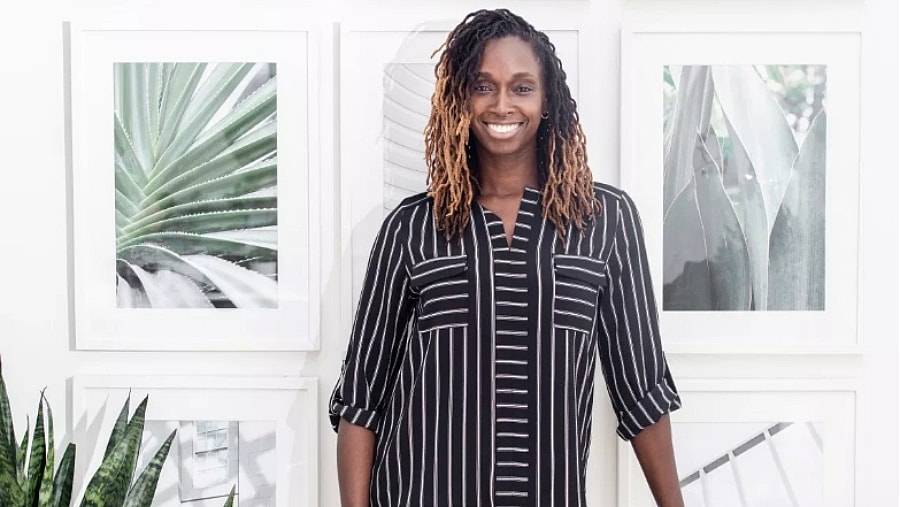When Dr. Aisha Cort steps into a room and opens her mouth, she’s prepared to impress, connect with and even surprise some people.
As a Black woman, specifically an Afro-Latina, she’s fluent in multiple languages, including her parent’s native tongue—Spanish.
Dr. Cort is one of millions of Black people worldwide who speak the language fluently, a reality of the transAtlantic slave trade, which left 15 times as many Africans in the colonies of Spain and Portugal than in North America.
A Yale graduate with a masters and PhD in Spanish, Cort grew up in Boston to Black Cuban and Guyanese parents. She was raised in a Spanish-speaking household, speaking Spanish at home and English at school. But Cort didn’t learn to read and write in Spanish until she was 13.
“I could barely read and I struggled,” says Cort. “I was really down on myself thinking I would never get any better.”
Then in her teenage years, Cort began to embrace more elements of her family’s culture.
“I practiced reading newspapers and magazines out loud with my mother correcting me, and started writing my journal entries in Spanish as well as copying song lyrics in Spanish. It was a process and it was slow, but I stayed focused on my goals to achieve full fluency, not just mastery of the spoken language.”
Today, Cort is an Afro-Latina who is bringing the language to the best and the brightest young minds at Howard University. As a full-time Spanish lecturer at the leading HBCU, she’s teaching hundreds to speak a language that has become more politically and socially important for undergrads to truly market themselves as a commodity to new employers. She is also teaching them to believe in the power of their own voices.
“One of the things that really bugged me is that a lot of my students were saying ‘Oh I’ve been taking Spanish for so many years and I still can’t speak. I’m not perfect if I’m not fluent,’ or ‘I have to be perfectly to be understood’ or ‘I can’t learn language like things like that,’ Cort told theGrio. “And it’s like okay. I can fix this. I can do this.”
After teaching Spanish at other schools for years, Dr. Cort branched out and start a Spanish language business. With her blog heydrcort.com as a hub, she’s training language learners one-on-one as well as hosting international trips where people can practice using the language in real life situations.
The cultural immersion program called Viva la Lengua, has most recently taken students to Havana, Cuba and Mexico. It involves four weeks of online study and culminates with travel.
“A lot of people think that language is unattainable just as travel is unattainable,” Dr. Cort told theGrio. “But when you fuse the two and break it down into bitesize digestible chunks and help people realize that speaking in a new language is just communication.”
Ultimately, in a world where more Black American millennials are going beyond the borders of the U.S., learning a second or third language is more crucial than ever.
Whether it is Spanish or others like French, Igbo, Portuguese, Mandarin, or Swahili, at the end of the day, language is power.
“You live in a world that is much greater than America,” Cort tells theGrio. “Limiting yourself to just your neighborhood is a hindrance.”
As you plan for 2019, Cort suggests you include language and travel as part of your new year resolution:
“Your world opens up, it expands immensely. You don’t lock yourself into expectations of, what is really; a kind of limiting view of blackness… Here is what we are capable of.”
Dr. Cort’s Tips For Learning Spanish

Dr. Cort gave us a sample lesson in Spanish to show how easy it is to learn. Turn’s out mindset, matters just as much as mechanics.
“Start with the tiny changes that have big effects,” she says.
Here are 5 quick practices you can do right now to jumpstart your language learning.
- Change your phone settings to Spanish. “You have your phone with you all the time, why don’t you change the language settings?” says Dr. Cort. “You know how to work the phones already so you’ll figure out what those things are in a different language.”
- Write post-it notes to yourself as a way to journal in Spanish. “If you journal every day or write notes to yourself start putting in Spanish phrases and words. Things that you pick up.”
- Watch Netflix shows in Spanish. “The time that you spend the watching television. Again if it’s not Netflix you can turn on Telemundo. You can turn on Univision. There are a plethora of Spanish stations. That hour that you would have spent in English. Put it in Spanish.”
- Listen to Spanish podcast while commuting. “Driving in your car. If you have your iPad or your iPod together or your phone hooked up. Why don’t you have a playlist in Spanish? There’s all sorts of musical genres that exist in Spanish and you can keep the language in your ear and passively be studying and taking in information.”
- Download apps and practice with a friend. Apps like Duolingo, Busuu and Babbel make learning easy directly from your phone.
For more coverage of Black travel abroad and Afro-LatinX culture, check out our LIVING section and follow theGrio’s Deputy Editor @NatashaSAlford.


